Don Buckley strolls across the Waterloo concourse. His job: to answer questions from passengers, pointing them in the right direction.
“People used to recognise you, smile, say ‘Hello, how are you, good morning, good afternoon,’ he says. “Of course, things have changed now. People don’t have the time.”
Buckley arrived at Waterloo in 1952, fresh off the ferry from Ireland. His accent undiminished by a lifetime in London, he still sounds like he left County Kerry only yesterday.
He was 14 and alone. Too young to be allowed to work on the trains, he got a job as a station message boy. Now aged 80, he is still here, doing three shifts a week.
“I’ve worked here 65 years. It’s part of me. I miss it when I’m not here, and I still look forward to coming into work. When I was young it was hard work. I did 11 years on nights - unloading the milk, unloading the parcels. I know every brick in every wall in this station. Working here is like family to me.”
Buckley is thought to be Britain’s longest-serving railway worker. He impresses passengers still. Asked about the next train to Strawberry Hill, or the fastest way to Farnborough, his answers are instantaneous. He knows all the times from all the platforms without bothering to look up at the departure screens.
Before meeting Buckley, I watched through hours of glorious archive footage from the BBC, British Pathé and the BFI National Archive’s transport films. Queen Mary opening the revamped station in 1922… Second World War bomb damage… the last ever scheduled steam service in 1967… even Matt Damon as Jason Bourne, avoiding assassins after stepping off a Eurostar.
“Oh yes, now, I met Mr. Damon,” Buckley reminisces. “I wasn’t meant to go up the stairs where they were making a film. But I did, and he held open the gate for me. A polite young man. I’ve met a lot of film stars. Roger Moore, now, he gave me a very good tip. Ten pounds.”
What stands out most from all this archive material is that the vast crowds on the concourse are nothing new. Waterloo may handle almost 100 million passenger journeys a year, but the hordes of commuters rushing for the train home are little changed from the scenes of 30, 60 or 90 years ago.
In the early films, all staff and almost all passengers are white men. Only in the last 30 years has that changed significantly. The clothes have altered more - most people no longer wear hats, hardly anyone carries a rolled-up umbrella, and ties on gentlemen are becoming less ubiquitous. Fewer people run today.
Surprisingly, staff uniforms have become less obvious to spot. Increasingly diverse employees stand out from the crowd less today, partly because the caps have gone.
The station, close to Waterloo Bridge in the London Borough of Lambeth, first opened in 1848 for the London and South Western Railway. It replaced an earlier 1838 station at Nine Elms, to be closer to the West End.
The extension past Nine Elms required the demolition of 700 houses. That’s not dissimilar to the scale of housing clearance demanded today for a third runway at Heathrow Airport. Most of the early four-track route was carried on a brick viaduct, which is largely still intact.
When Waterloo opened, there were just 14 trains a day. Now there are 1,700.
The original intention was to continue the tracks into the City, a role finally fulfilled half a century later (in 1898) by the Waterloo and City underground line. Development was haphazard, and the original layout was challenging to navigate. The London Necropolis and National Mausoleum Company opened a private station inside Waterloo that provided funeral services to the huge Brookwood Cemetery.
The station was substantially rebuilt with 21 platforms (opening in 1922), with a new Victory Arch over the main entrance commemorating the 585 employees who gave their lives during the Great War. This is now a listed building.
Electrification using a 600V DC third rail system had started in 1915, initially reaching Wimbledon. Under the 1923 Grouping the new Southern Railway continued the switch from steam, running to Guildford in 1925 and to both Portsmouth and Reading in 1937. Yet Waterloo was the last London terminus to run timetabled steam trains. The final steam-hauled service was on July 9 1967.
In 1975, after he was released from prison, train robber Buster Edwards opened a flower stall outside the station.
In 1994, the former platforms 20 and 21 were replaced by the new Waterloo International station, with Eurostar trains to Paris and Brussels. The international platforms closed in 2007 with the switch to St Pancras, and except for brief periods they have remained largely closed ever since.
Also in February 1994, Stagecoach ran the first privatised train of the modern era. The 0510 from Twickenham carried a handful of paying passengers… and rather more journalists chasing the Transport Secretary of the day, Sir George Young. Stagecoach retained the South West Trains business until last August, when it was replaced by First MTR, which has adopted the South Western Railway name.
Throughout the last century, Waterloo has been Britain’s busiest railway terminus. It now handles nearly 100 million passenger journeys a year, and has more platforms, more escalators and a greater floor area than any other station in the UK (although Clapham Junction has the greatest number of passengers getting on or off trains, as it handles journeys in and out of both Waterloo and Victoria).
It its own right, Waterloo edges into the bottom of the list of the world’s 100 busiest railway stations. But combined with the underground station and Waterloo East, as a complex it handles well over 200 million arrivals and departures a year. This makes it the busiest transport hub in Europe.
“I was very young when I came,” recalls Don Buckley. “I couldn’t get my own place to live. Everywhere was ‘room to let, no Irish’. I was getting £7 a week but sending some of it home.”
Buckley talks about his night work on Platforms 13 and 14. Today, they’re used by long Class 450 and ‘444’ trains up from the South Coast. But he remembers them being used for overnight parcels, milk… and coffins.
“There were a lot of poor people living here in those days. Say they went to Southampton and Bournemouth and died. Their families couldn’t afford a hearse, so they put the coffins on the train for free at night. I didn’t mind unloading them - it was work.”
Beneath the station, there are more than 20 acres of passageways. Some are open to passengers - many are not. Buckley knows them all.
He’s reluctant to go into a former shooting gallery or the archways used as wartime bomb shelters. They are filthy dirty and unused, he says, and still full of asbestos. Instead, he walks along a below-platform passageway, past a plaque that pays tribute to ‘The Waterloo Free Buffet for Sailors and Soldiers’, which fed more than eight million people during and just after the First World War, supported entirely by volunteers.
Then he opens a locked metal door and passes into areas now rarely seen by anyone.
“I remember I was working one night. I leaned against the wall waiting for that lift, and I felt something move. I called security. We opened it up and found a whole room full of German black leather soldiers’ coats, the sort that went right down the legs. And gas masks… lots of gas masks. Right behind the wall.
“I’ve done every job there is at Waterloo. In the early days, when I was young, there was a cinema by Platform 1. I’d sneak in there. It was there until about 1970. Then, gentlemen wore bowler hats and everyone had an umbrella.
“I wrote back to my mum about it. Remember I had never seen a train. I had never seen a man in a bowler hat, I didn’t even know what the hat was called. All the shops here now, they were offices. As a messenger I had to go into them all. It was good fun, because I was in my glory and that’s where all the girls worked.
“We were a nice gang here. We worked hard. There were no fork lifts to move things. You just put your back into it.
“The trains had compartments. They’ve gone. There used to be one marked for ladies only. I would tell the gentlemen to get out sometimes. They didn’t like me for that!
“But the other day I was helping a VIP out of exit 5, and there was a young girl coming up the steps with a pushchair. So, I said to a young man, could he help? No, he replied, he was busy. Years ago, that wouldn’t have happened - everyone helped one another. That’s what’s changed. I notice that more than the different trains, the different shops.”
Waterloo is the terminus of the South Western Main Line to Weymouth via Southampton, the West of England Main Line to Exeter via Salisbury, and the Portsmouth Direct line to Portsmouth Harbour for the Isle of Wight. It is also the end of the line for suburban commuter services around west and southwest London, Surrey, Hampshire and Berkshire.
It is connected to the London Underground station of the same name, and is adjacent to Waterloo East station on the South Eastern Main Line.
There are 16 trains per hour to Woking via Clapham Junction, a further 16 trains per hour to Wimbledon via Clapham, and 12 an hour via Barnes on the Windsor lines, making a total of 44 trains per hour. And yes, that’s just in the off-peak.
South Western Railway is due to move Windsor Lines services into the former Waterloo International Terminal in December. Platforms have been shortened and the tracks approaching the station throat have been altered. The former ‘orchestra pit’ check-in has been bridged with new level access from the main concourse.
There’s a snag with a new roof that will fill in the gap between the International station roof and the roof of the main concourse, but Becky Lumlock, Network Rail’s Wessex Route Managing Director, says the work is in hand (although she concedes the roof is behind schedule).
“The first Eurostar went to Paris from here, so it is part of Waterloo’s history,” she tells RAIL in front of the dusty concrete construction site.
“It is also part of Waterloo’s future. We are investing £800 million here. The platforms are due to be operationally ready at the end of this year. That will give us another five platforms. Further in the future, we will develop new retail areas underneath.
The work is part of a wider scheme to increase capacity at Waterloo by 30%. This included the lengthening of Platforms 1-4 at the opposite end of the station in August 2017, ready for ten-car suburban trains.
“That has already enabled us to increase capacity by 15%,” says Lumlock. “And increasing from 19 platforms to 24, along with new trains for South Western Railway, will do the same again.”
As part of the national response to May’s botched timetable changes on Govia Thameslink Railway and Northern, SWR and Network Rail have been ordered by the Department for Transport to postpone the planned introduction of new services this December (RAIL 857). More, better and faster services are on hold. It is not yet clear how much of the move to the international platforms can be completed before the major reworking of the schedule takes place - whether that is next May, or further into the future.
Additional capacity increases would require remodelling at Clapham, and the creation of grade-separated ‘flyover’ junctions at Woking and Basingstoke.
Waterloo is also one of two proposed termini for a new service to Heathrow Airport. Heathrow Southern Railway, a private venture led by AECOM, proposes to construct eight miles of new railway to enable trains to run from Waterloo via Clapham Junction, Hounslow and Staines to Heathrow Terminal 5, continuing via a new station at Old Oak Common (for HS2 and the Elizabeth Line) and terminating at Paddington. An opening date between 2025 and 2027 is suggested.
A future Crossrail 3 could include new tunnels connecting Waterloo with Euston station, linking the West Coast and South Western main lines.
Let’s leave the last word to Don Buckley - 80 years young and with no plans to retire.
“My wife says to me - and so do my children and grandchildren - when are you going to leave that station? You don’t need to work there anymore. But do you know what, sir? It’s in me. It’s part of me. If I’m off, I can’t wait for the next day to get back.
“When I first came here from a tiny place in Ireland, I had never seen anything like it. My wife doesn’t understand it, but it’s like another home to me. It still gives me a buzz today.”

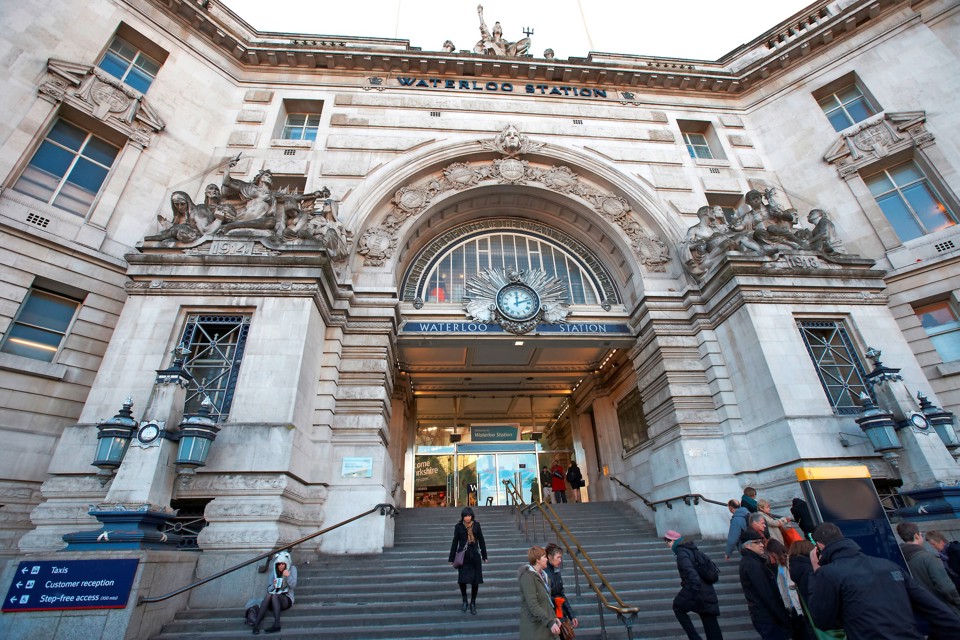

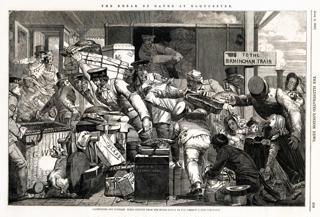
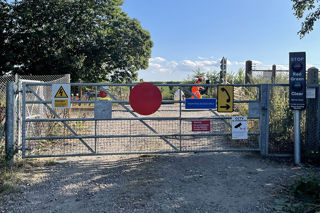
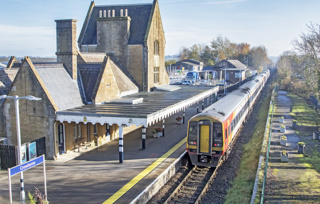
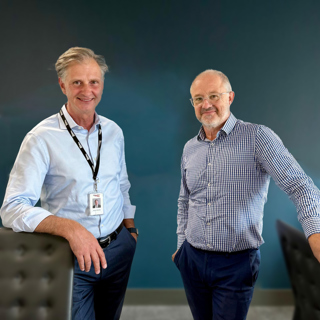











AndrewJG8918 - 07/09/2018 11:57
Waterloo is a brilliant & welcoming railway station in Central London on the south side of the River Thames. And with the former Eurostar platforms now being used for Reading & Windsor services aswell other services to relief the congestion of trains coming in & out of London Waterloo. When Eurostar moved from Waterloo International to St. Pancras International 11 years ago. Which St. Pancras was being redeveloped into a world class station as part of HS1. And with South Western Railway ordering the Class 701 Aventras to replace the Class 455, Class 456, Class 458 and Class 707 on inner suburban and outer suburban lines and on Reading & Windsor & Eton Riverside which are due to enter service in 2020/21.